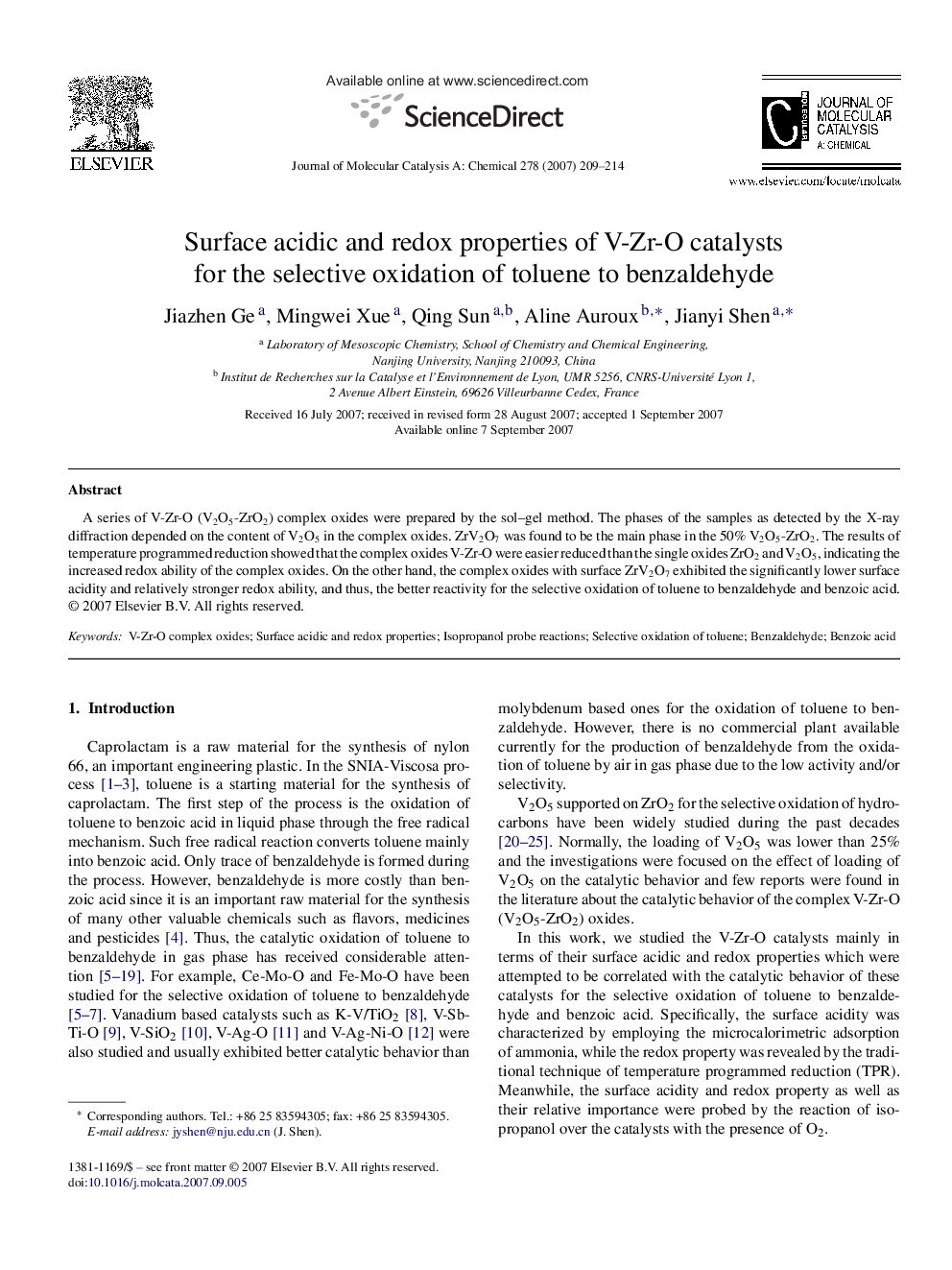| Article ID | Journal | Published Year | Pages | File Type |
|---|---|---|---|---|
| 67732 | Journal of Molecular Catalysis A: Chemical | 2007 | 6 Pages |
A series of V-Zr-O (V2O5-ZrO2) complex oxides were prepared by the sol–gel method. The phases of the samples as detected by the X-ray diffraction depended on the content of V2O5 in the complex oxides. ZrV2O7 was found to be the main phase in the 50% V2O5-ZrO2. The results of temperature programmed reduction showed that the complex oxides V-Zr-O were easier reduced than the single oxides ZrO2 and V2O5, indicating the increased redox ability of the complex oxides. On the other hand, the complex oxides with surface ZrV2O7 exhibited the significantly lower surface acidity and relatively stronger redox ability, and thus, the better reactivity for the selective oxidation of toluene to benzaldehyde and benzoic acid.
Graphical abstractA series of V-Zr-O (V2O5-ZrO2) complex oxides were prepared by the sol–gel method, and ZrV2O7 was found to be the main phase in the 50% V2O5-ZrO2, which exhibited the significantly lower surface acidity and relatively stronger redox ability as evidenced by the probe reaction of isopropanol conversion in air, and thus, the better reactivity for the selective oxidation of toluene to benzaldehyde and benzoic acid. Figure optionsDownload full-size imageDownload as PowerPoint slide
